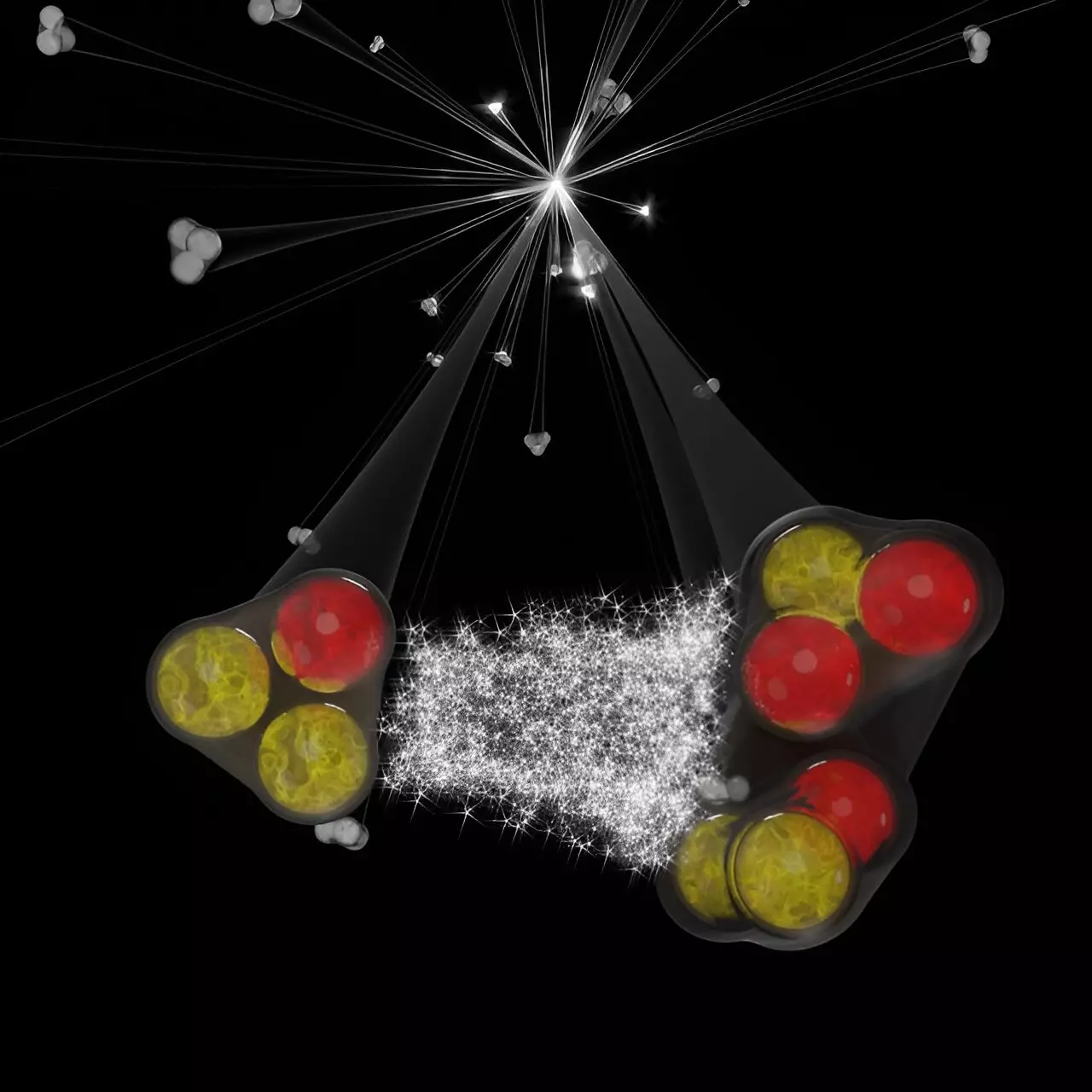The fundamental forces that govern interactions at a subatomic level have long intrigued scientists. A recent study by the ALICE collaboration, published in *Physical Review X*, dives into the complexities of three-body nuclear forces, focusing specifically on kaon-deuteron and proton-deuteron interactions. This research not only amplifies our understanding of fundamental nuclear forces but also sheds light on the rich tapestry of phenomena that arise in modern nuclear physics, such as the structure of atomic nuclei, high-density nuclear matter, and the enigmatic cores of neutron stars.
The Nature of Nuclear Forces
Nuclear forces are typically understood as interactions between pairs of particles. However, the dynamics become substantially more intricate when three particles are involved. This research is particularly pertinent because it addresses the challenges of modeling strongly interacting three-hadron systems, an area critical for comprehending various astrophysical and nuclear phenomena. For example, in high-energy proton-proton collisions at the LHC, particles are generated close together, leading to the question of whether these particles influence one another prior to their dispersal into space.
The ALICE collaboration utilizes state-of-the-art particle identification techniques to observe particle correlations in high-multiplicity proton-proton collisions at a remarkable center-of-mass energy of 13 TeV. These conditions are essential for measuring the correlation function, which evaluates the likelihood of detecting two particles with specific relative momenta. This function serves as a vital tool, informing researchers about the nature of particle interactions: a value of one indicates independence, while values above or below unity hint at attractive or repulsive forces, respectively.
As the data reveals, the kaon-deuteron and proton-deuteron systems exhibit a correlation function consistently below unity for low relative transverse momenta. This observation suggests an overall repulsive interaction between these particle pairs, challenging previously held assumptions and underscoring the need for precise measurements in understanding nuclear forces.
The finding that kaon-deuteron correlations display short-range dynamics, with particles produced at distances of around 2 femtometers, is particularly noteworthy. The impact of the Coulomb force, in conjunction with strong interactions, significantly influences the correlations observed in the kaon-deuteron system. However, the proton-deuteron correlation presents additional complexities that cannot be fully captured by a two-body model, necessitating a more comprehensive three-body calculation that considers the intricate structure of the deuteron.
This differential behavior exemplifies the sensitivity of correlation functions to the short-range dynamics within the three-nucleon system. The collaboration’s success in merging theoretical models with experimental data marks a significant step forward in our understanding of three-body interactions, highlighting the importance of multidimensional approaches in nuclear physics research.
Future Directions: Expanding the Research Horizons
One of the most promising aspects of ALICE’s findings is its applicability to future research endeavors. The collaboration envisions leveraging similar methodologies to explore three-baryon systems, particularly in the strange and charm sectors, during forthcoming LHC Runs 3 and 4. This undertaking promises to illuminate the properties of these baryonic systems, which remain experimentally elusive, thereby enhancing our understanding of the fundamental building blocks of matter.
The ALICE collaboration’s recent study represents a significant advancement in the field of nuclear physics, unveiling new insights into the complexities of three-body nuclear forces. By rigorously analyzing kaon-deuteron and proton-deuteron interactions, researchers are now better equipped to tackle the intricacies of strong interactions in multiple particle systems. This endeavor serves as a stepping stone toward further exploration of nuclear forces, paving the way for future insights that could reshape our comprehension of the universe at the most fundamental level.


Leave a Reply